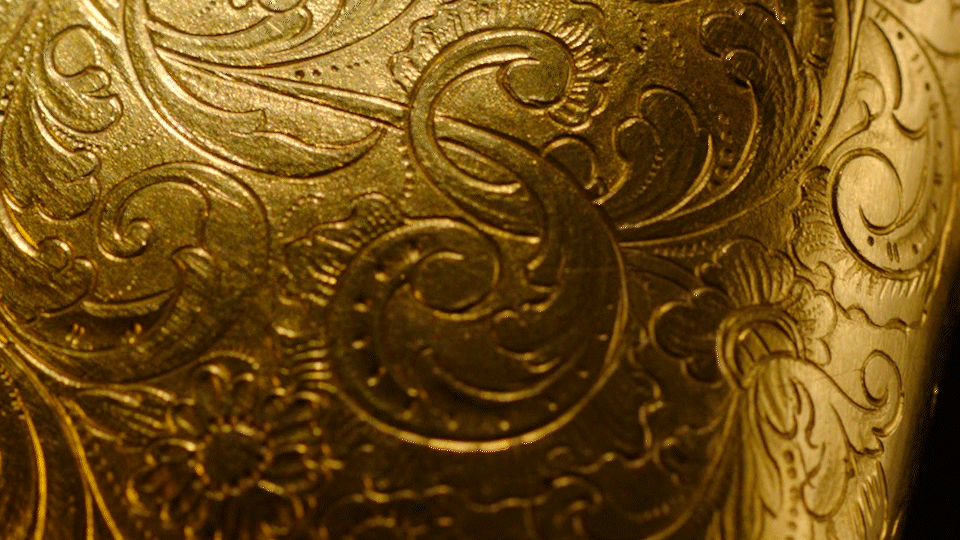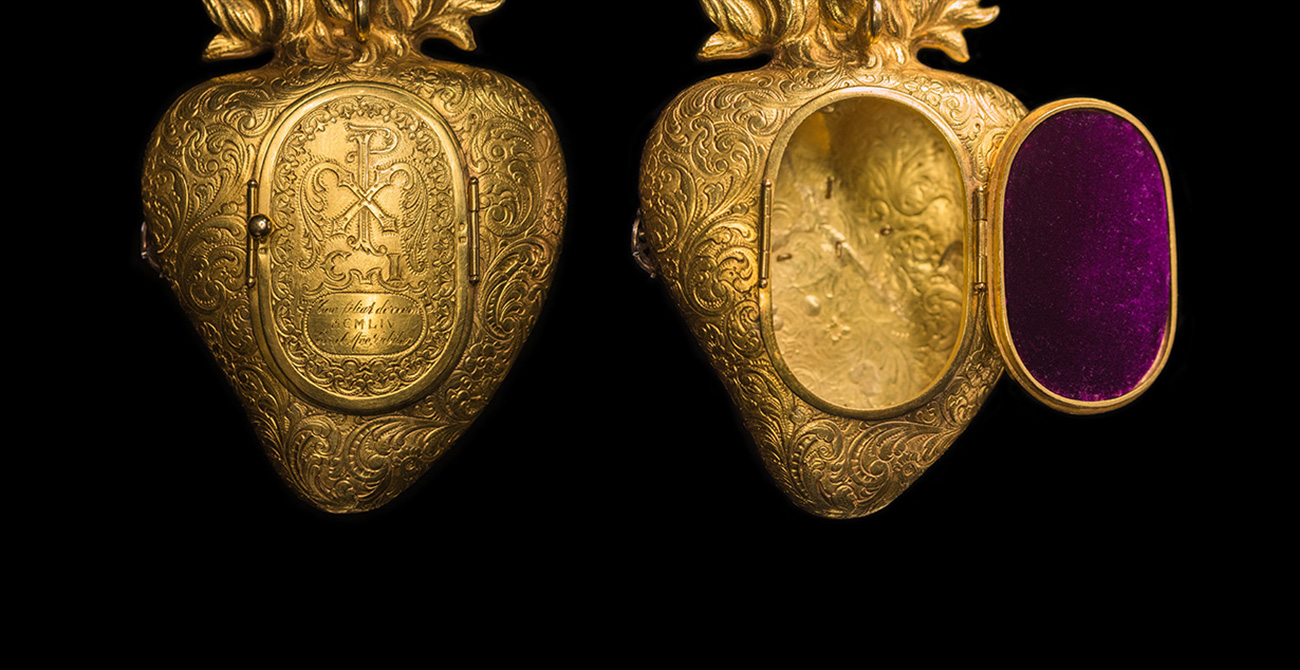


The pendant is made of gold in the shape of a heart, covered with floral engravings. In the center of the heart, a series of daisies of various sizes bloom horizontally; at the top is a flame decorated with rubies, and three Madonna lilies are inserted directly into the flames. The daisies and lilies are all in silver and inlaid with diamonds. On the reverse of the pendant is a concealed oval door with the common Christian symbol of the Chi Rho, composed of the Greek letters Χ and Ρ superimposed on each other, from the first two letters of the Greek word "ΧΡΙΣΤΟΣ", representing Jesus Christ. The lower two lines of cursive are in Spanish "Con filial devoción, En el Año Jubilar", meaning "Consecrated with the love of a child, in the year of jubilee". The back of the concealed door is covered in fuchsia velvet, echoing the color of the rubies at the top of the pendant. This pendant is a reliquary used to store saints' bones and other relics for pilgrims to worship.

The Catholic tradition of venerating the Immaculate Heart of Mary is expressed in this work. The Church believes that the Immaculate Heart of Mary is pure and sinless, the only human heart without stain. The Immaculate Heart of Mary symbolizes purity and her love for God. The lily at the top of the pendant resembles a sharp blade that pierces through the flying flames into the Sacred Heart. A sword in the heart is the standard motif of the Immaculate Heart of Mary, suggesting the pain of the Virgin's heart as she witnesses the crucifixion of Jesus. Traditionally, the white lily is the flower dedicated to the Virgin Mary, hence its name. The jeweler uses the purity of the diamond to symbolize the Virgin's purity. The flame above the heart is the Biblical fire of God, signifying the presence of God in Mary's heart. The daisy in the center of the pendant has long been associated with the Virgin, representing innocence, chastity, and humility.
